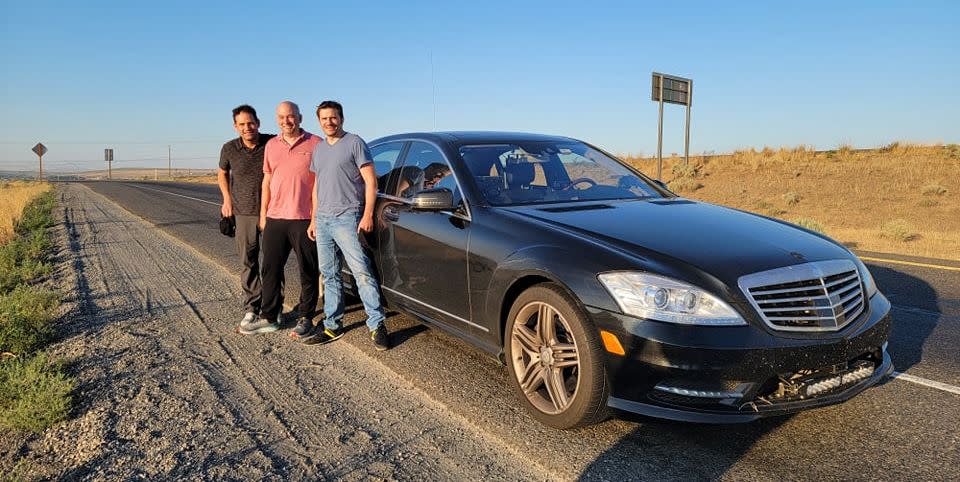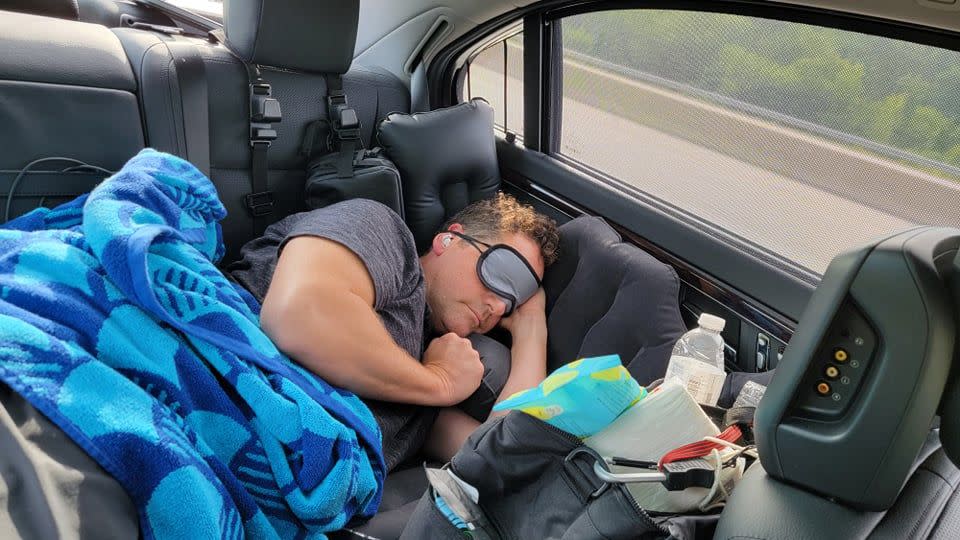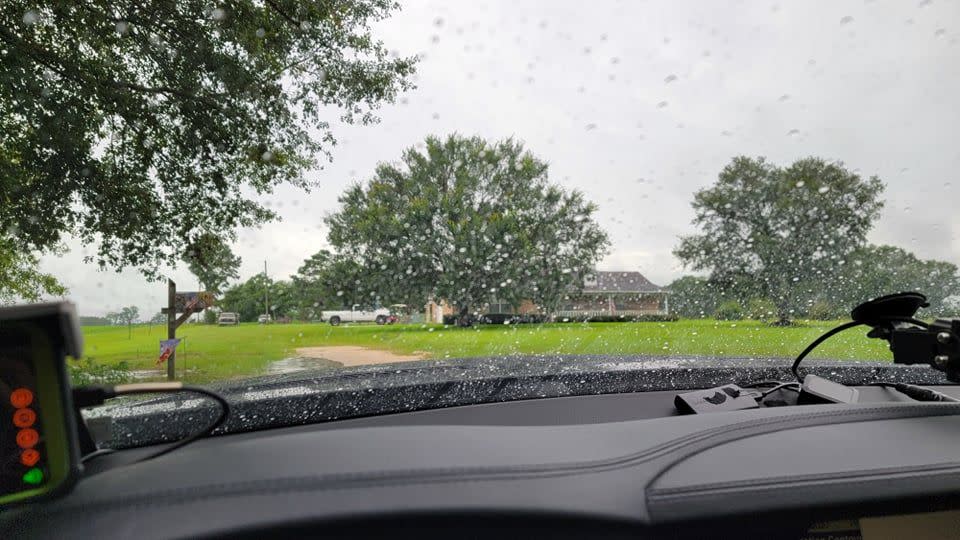Trio Drives to All 48 Contiguous States in 86 Hours, 19 Minutes, Shattering Record

Plenty of people have spent a lifetime ticking off visits to various U.S. states. A few have even taken the plunge and visited all of the lower 48 in a single, lengthy road trip over weeks or even months. But traveling through all of them as fast as possible, stopping only for fuel and restroom breaks? It's nothing if not the ultimate expression of the American psyche, forever shouting go, go go!
That's what three tech executives in a used Mercedes-Benz S-Class achieved this week. Todd Heckel, 49, of Seattle, Washington; Grady Leno, 48, of Philadelphia, Pennsylvania; and Peter Loforte, 53, of Palm Springs, California began their meticulously-planned journey on July 8, in the parking lot of Wicked Awesome BBQ in White River Junction, Vermont. They were just across the Connecticut River from New Hampshire, the number two state on their list. Eighty-six hours and 19 minutes later, the trio drove across the Columbia River into Washington state, capping a 6677-mile odyssey that touched every one of the contiguous 48 states.
That's right, they spent nearly four days in a car, just to prove that they could visit every state in the continental U.S. faster than anyone else.
Show above, from left to right: Peter Loforte, Todd Heckel, and Grady Leno with their record-breaking Mercedes-Benz.
There's more to it than that, of course. They didn't just hop in a car with a stack of maps and drive. The 3-day, 14-hour and 19-minute adventure was the culmination of lengthy planning. The trio completed a Cannonball-style cross-country run in May of this year, covering the coast-to-coast route between the Red Ball Garage in New York City and the Portofino Hotel & Marina in Redondo Beach, California in just over 36 hours. With that well-worn route covered, they set out to plan a more unique, and in many ways more difficult, undertaking.
"Unlike the Cannonball, which is about speed, the lower 48 is more about route optimization and planning," Leno, the owner of the record-setting Mercedes and a self-proclaimed math nerd, told Road & Track.

Indeed, the Cannonball has become a relatively straightforward point-to-point rush, one in which success can be realized either through rigid planning or seat-of-the-pants derring-do. Leno said that it took more than 60 hours of planning to figure out how to put tires on tarmac in each of the lower 48 states in the most efficient manner possible—20 hours to rough out the route, 20 hours to second-guess and test every assumption, and more than 20 hours to fine-tune the route and dial in a set of navigation and GPS tracking devices that could work without cellular service.
"Finding the fastest route for driving the lower 48 is a classic computer science problem commonly known as the traveling salesman problem," Leno said. "We applied computer science methodology to solving this route optimization challenge."
That diligence paid off. The few who pay attention to such things will note that this new record time is more than eight hours faster than the previous record, which had stood at 94 hours, 42 minutes and 35 seconds since 2015.

"The spirit of Cannonball is testing the possibilities of road drivers in road cars on real roads," said Ed Bolian, who set a New York-to-Los Angeles record in 2013—now defeated several times—and has acted as an unofficial gatekeeper of illegal speed records ever since. "New York to L.A. will always be the most iconic and significant route, but that's probably because even us crazy idiots don’t have the patience to go out and touch all 48 states," Bolian told Road & Track. "It is a hugely impressive feat and perfectly illustrates the reality that our horizons are only as close as we make them."
Of course, the distance and time challenges make the lower-48 run a far different matter than the traditional Cannonball. Even the worst-prepared car, crewed by drivers who like long lunch breaks and visiting dispensaries in legal-weed states can cover the 2800-or-so miles or so between New York to L.A. in less than 40 hours. (Your author once spent an entire day parked in a small town in Nebraska, searching for parts for my broken-down car, and still managed to finish a cross-country run in less than 60 hours.)
Three-and-a-half straight days in the car? That requires rigorous planning. Leno said the team approached fatigue differently compared to the east-west Cannonball, adhering to rigid four-hour shifts for each driver. The cycle was drive, spot, sleep, repeat.
"We turned the back seat into a bed, and we never disturbed the sleeper, not even at fuel stops," he said. "That way, the person starting the driving shift was always fresh."
They were also more conscientious about food and beverage intake. "Nutrition was important," said Heckel. "When we did the Cannonball, we basically relied on junk food and 5-Hour Energy drinks, and we felt terrible. So this time, we thought a lot about what we were eating and drinking."

The car was like most that have completed these non-events over the past decade: a large German sedan. Leno purchased the 2012 Mercedes-Benz S550 for $27,500, and made a few modifications to get it ready for the trip: a 22-gallon fuel cell in the trunk for extended range, an LED light bar in the lower grille for nighttime visibility, and an integrated radar detector and laser jammer system of the type that's more or less de rigueur among the more serious Cannonballers.
Heckel, Leno, and Loforte wanted to make sure their efforts were backed up by ample proof. So, like Alex Roy did when he set the first "modern" coast-to-coast record, the trio recorded video of their entire journey, and used GPS trackers to record location data points.
Leno was coy when I asked him about their top speed. Their 78-mph average suggests that they made time wherever they could—especially considering how their route forced them down numerous smaller roads in their effort to hit all 48 states. That included a brief roll down a driveway that took them a handful of feet into Florida, enough to check the Sunshine State off the list. When they crossed the line, they did what they had in every other state: recorded a GPS data point and took a photo of the car.
"Whoever that driveway belonged to was probably wondering who was taking pictures of a Mercedes," Leno said.

Most states took more time to visit than that Florida blip. Maryland and Rhode Island were among the shortest stretches; the team spent the most time crossing South Dakota and Nevada, and steered clear of the Four Corners, where Colorado, New Mexico, Arizona, and Utah all meet.
"You'd think that would be a good way to get four states at once, but it didn't work out," Leno said. "It's too far out of the way."
However fast they ended up going, the trio managed to avoid getting any speeding tickets, though they came close close as they drove down the short stretch of Old Route 66 that lops off the southwest corner of Kansas, between Missouri and Oklahoma.
"We may have rolled through a stop sign when no one was around," Leno admitted. "There was a cop there who flashed the lights, and wagged a finger at us through the window, as if to say, 'Naughty, naughty.'"

You Might Also Like

 Yahoo Autos
Yahoo Autos 